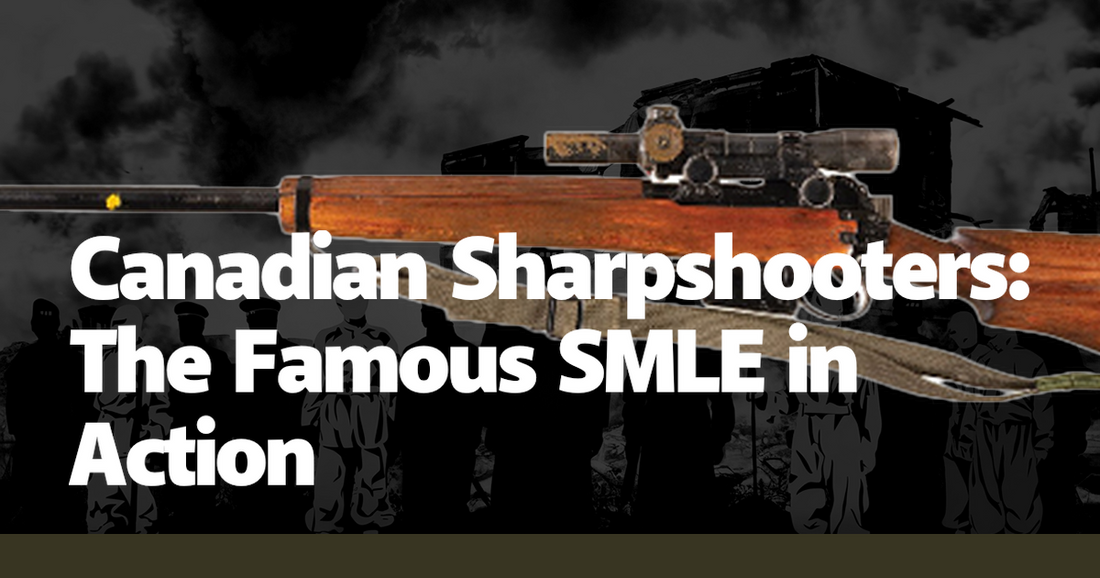The story of Canadian sharpshooters and their famed Short Magazine Lee-Enfield (SMLE) rifles is one of precision, resilience, and unparalleled marksmanship. During the tumultuous years of the First and Second World Wars, Canadian soldiers demonstrated exceptional skill with the SMLE, a rifle renowned for its reliability and accuracy. The SMLE, often referred to as the "Smelly" by troops, was more than just a weapon; it was an extension of the sharpshooter's will and a testament to the rigorous training and indomitable spirit of the Canadian forces. This article delves into the legacy of these sharpshooters, their iconic rifles, and the pivotal moments that etched their names in military history.
The SMLE, introduced in 1904, was a bolt-action rifle that quickly became the standard issue for British and Commonwealth forces. Its design allowed for rapid firing, with a ten-round magazine that could be reloaded using stripper clips. Canadian sharpshooters, known for their keen eye and steady hand, found the SMLE to be an ideal companion on the battlefield. The rifle's accuracy at long ranges made it perfect for the sniping roles that many Canadians excelled in. One notable example is Francis Pegahmagabow, an Ojibwa soldier from Parry Island, Ontario, who became one of the most effective snipers of World War I. With the SMLE in hand, Pegahmagabow is credited with over 300 confirmed kills and played a crucial role in several key battles, including the Battle of Passchendaele.
The effectiveness of the SMLE was not solely due to its design but also the rigorous training Canadian sharpshooters underwent. These soldiers were trained to understand windage, elevation, and the importance of camouflage. They were taught to blend into their surroundings, remain patient, and wait for the perfect shot. The SMLE's robust construction meant it could withstand the harsh conditions of the trenches, from the mud of Flanders to the freezing cold of the Western Front. This reliability allowed Canadian sharpshooters to maintain their edge, knowing their rifle would perform when it mattered most.
One of the most gripping anecdotes from World War I involves the Canadian sharpshooters during the Battle of Vimy Ridge in 1917. The battle was a defining moment for Canada, and the sharpshooters played a critical role. Positioned high on the ridge, they picked off German soldiers with deadly precision, providing cover for advancing Canadian troops. The SMLE's ability to maintain accuracy over long distances was crucial in this engagement. The success at Vimy Ridge was a turning point in the war and solidified the reputation of Canadian forces as elite soldiers. Stories of sharpshooters like Pegahmagabow and others became legendary, inspiring future generations of soldiers.
During World War II, the SMLE continued to be a trusted weapon for Canadian forces. The rifle's design saw several improvements, including the No. 4 Mk I variant, which featured a heavier barrel and simplified construction. Canadian sharpshooters once again demonstrated their prowess in various theaters of war, from the beaches of Normandy to the rugged terrain of Italy. The SMLE's role in these conflicts was not just limited to sniping; it was also used effectively in close-quarters combat, thanks to its quick rate of fire and sturdy bayonet. The versatility of the SMLE made it a favorite among Canadian troops, who relied on it in diverse combat scenarios.
The legacy of Canadian sharpshooters and their SMLE rifles extends beyond the battlefield. The stories of their heroism and skill have been passed down through generations, becoming an integral part of Canada's military heritage. The SMLE itself has become a symbol of Canadian resilience and ingenuity. Museums and collectors around the world preserve these rifles, ensuring that the history they represent is not forgotten. The connection between the Canadian sharpshooters and their SMLEs is a testament to the bond between a soldier and their weapon, a relationship forged in the crucible of war.
In modern times, the principles and techniques honed by Canadian sharpshooters with the SMLE continue to influence military training. Today's snipers still study the methods developed by their predecessors, learning the importance of patience, precision, and adaptability. The SMLE, while no longer in active service, remains a revered piece of military history. Its impact on the development of modern sniper rifles is undeniable, and the lessons learned from its use continue to shape the training and tactics of contemporary sharpshooters.
The story of Canadian sharpshooters and the SMLE is one of courage, skill, and unwavering dedication. From the muddy trenches of World War I to the battlefields of World War II, these soldiers proved their mettle time and time again. The SMLE was more than just a tool; it was a symbol of their expertise and determination. As we look back on their contributions, we honor not only their achievements but also the enduring legacy of the SMLE in the annals of military history. The tales of Canadian sharpshooters and their trusty SMLEs will continue to inspire and educate future generations, reminding us of the extraordinary feats that can be accomplished with skill, determination, and the right tools.

